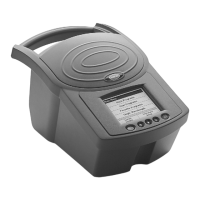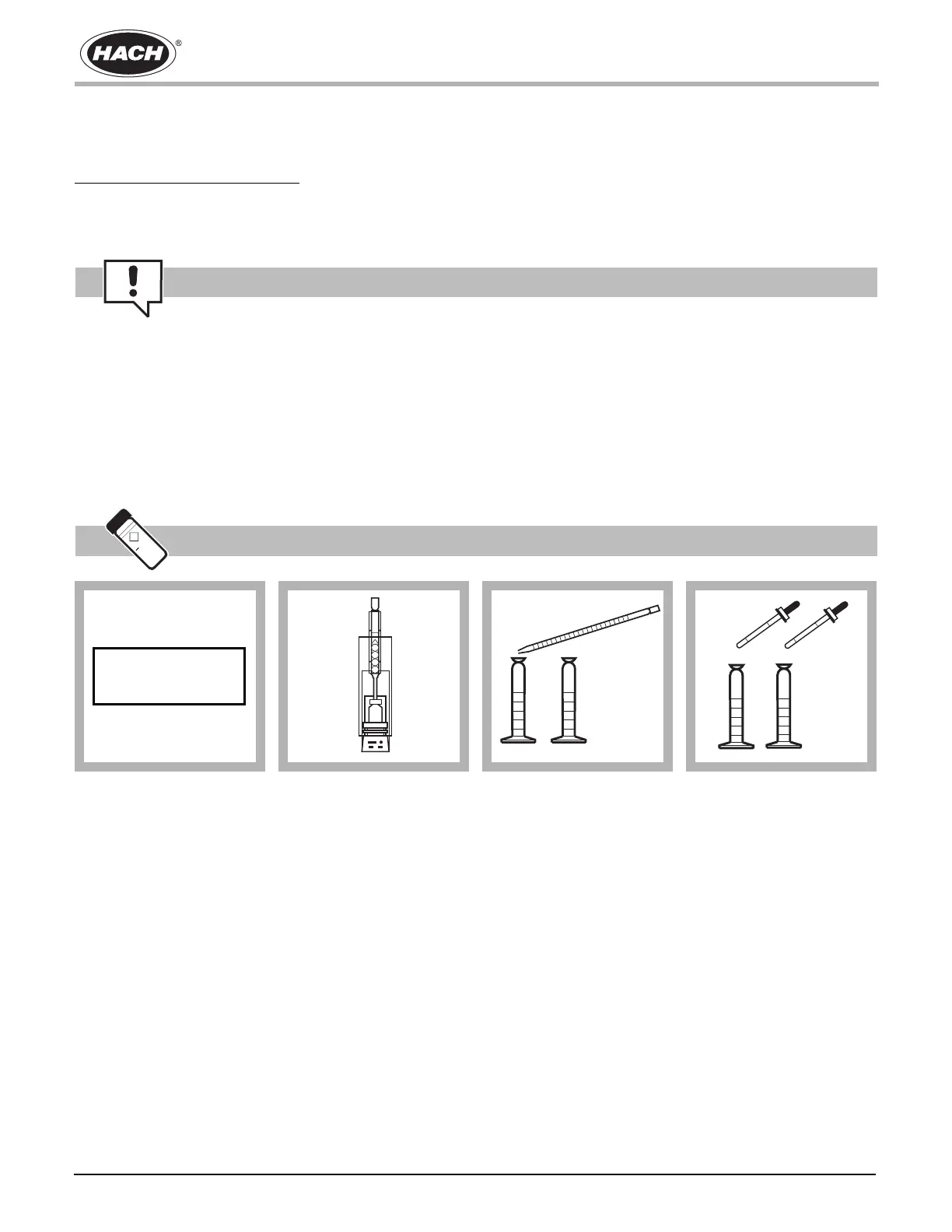DR/2400
Nitrogen, Total Kjeldahl
NitrogenTK_None_Other_NES_Eng_Ody.fm Page 1 of 6
ó
• For more accurate results, determine a reagent blank value for each new lot of reagent. Follow the procedure using deionized
water in place of the sample. Subtract the reagent blank value from the final results or perform a reagent blank adjust.
• If using the Flow-Thru Cell, periodically clean the cell by pouring a few sodium thiosulfate pentahydrate crystals (Cat. No. 460-01)
into the cell funnel. Flush it through the funnel and cell with enough deionized water to dissolve. Rinse out the crystals.
• Hold droppers and dropper bottles vertically, not at an angle, when dispensing reagent.
• Nessler reagent contains mercuric iodide. Both the sample and blank will contain mercury (D009) at concentrations regulated as
a hazardous waste by the Federal RCRA. Do not pour these solutions down the drain. See Section 4 on page 55 for more
information on proper disposal of these materials.
Nitrogen, Total Kjeldahl
Method 8075
Nessler Method* (Digestion Required)
* Adapted from Hach, et. al., Journal of Association of Official Analytical Chemists, 70(5) 783-787 (1987); Hach, et. al., Journal of
Agricultural and Food Chemistry, 33(6) 1117-1123 (1985); Standard Methods for the Examination of Water and Wastewater
(1 to 150 mg/L)
Scope and Application: For water, wastewater, and sludge; digestion is required.
1. Touch
Hach Programs.
Select program
399 Nitrogen, TKN.
Touch
Start.
2. Digest the sample
amount as described in
the Digesdahl
®
Digestion
Apparatus Instruction
Manual. Digest an equal
amount of deionized
water as the blank.
3. Select the appropriate
analysis volume of the
digested sample given in
Ta bl e 1 on page 4. Pipet
the analysis volume from
the sample and the blank
into separate 25-mL
mixing graduated
cylinders.
4. Add one drop of TKN
Indicator to each
cylinder.
Tips and Techniques
10 mL
Method 8075
Hach Programs

